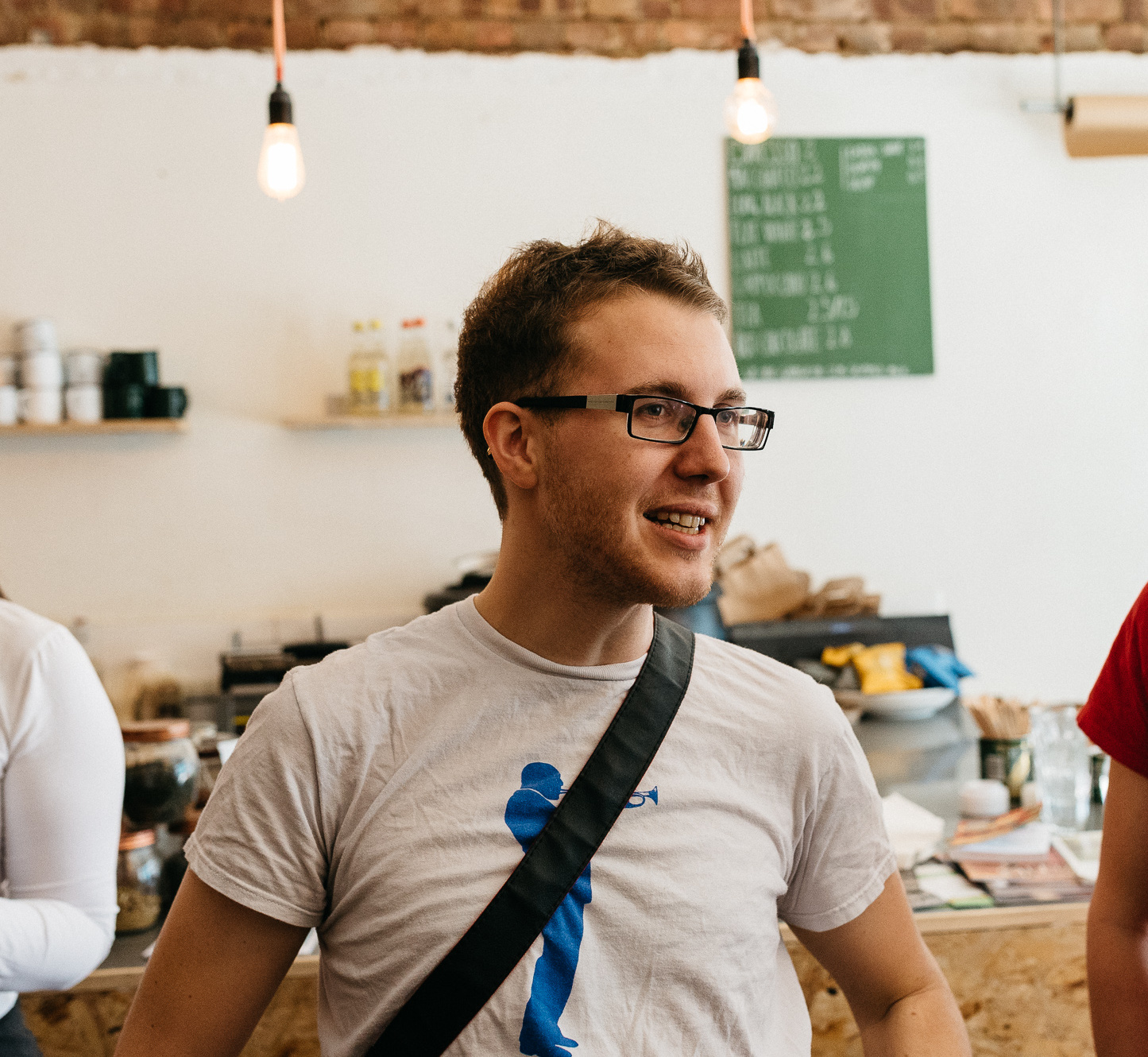After spending most of 2014-15 getting to know mezcal and whisky, a summer road trip from LA to Seattle turned me firmly back on to beer, particularly that of the wild / sour variety. We were so spoiled by the plethora of options (Barrelworks, Russian River, The Rare Barrel, Cascade) that the UK’s sour beer scene didn’t feel up to scratch on our return.
A year on, more and more exciting sour beers are starting to emerge from the likes of Buxton, Chorlton and Wild Beer Co., and barrel ageing programmes are quietly under way all over the country. Good things come to those who wait and all that. But great things come to those who travel to Belgium in the meantime. I couldn’t claim to be a sour beer lover any longer without making the pilgrimage to Cantillon in Brussels, the iconic lambic brewery whose beers are revered the world over.
Outside of Brussels, you’ll most probably have to pay a fortune for a bottle, but at the brewery prices are absurdly low. I for one won’t be buying it anywhere else but from the source from now on (he says, confidently). The brewery is off the beaten track in Anderlecht where it’s been since 1900. Apparently, there were 100+ breweries in Brussels back then, but Cantillon is the only notable survivor.
Cantillon is one of the last remnants of a time when brewers and their product still had to contend with nature's influence. It is unique because of its approach to the brewing process, the amount of time used for production, and the taste of its beers, all of which are very different from what is associated with contemporary beer production. Brasserie Cantillon
Where their brewing method particularly differs is in the fermentation process. Rather than being artificially inoculated with yeast, the wort is cooled in the open air where it becomes contaminated with wild airborne yeasts and bacteria which initiate the fermentation process in barrels later on, leading to a sour taste. It’s also worth noting that they make use of aged hops (3 years). Hops are most often employed for their bitterness or flavour. At Cantillon, they are needed for their tannins (a natural preservative). More hops are required than usual, so aged hops (that have lost much of their bitterness) are utilised.
Once cooled, the wort is moved to oak or chestnut casks. The wood is fairly unimportant (compared to winemaking), but it allows beer to exchange gases with the surrounding air.
Since there is no need for the tannins present in new wood, we only work with casks which have already been used by winemakers, or, more rarely, Cognac producers. Invented by the Gaul, wooden barrels were used by brewers for centuries. Nowadays, however, modern breweries use stainless steel vessels and cooling systems to control the fermentation process. Brasserie Cantillon
As the wild yeasts react with the sugars, there is violent spontaneous fermentation in the barrels to the extent that sealing them in the first few days would risk a CO2 explosion. Slow fermentation (sealed) begins after 3-4 weeks. This can continue for three years over which 20% of the contents will be lost to evaporation. The resulting liquid is called lambic. Cantillon’s signature beer, the Gueuze, is a blend of 1, 2 and 3 year old lambics.
This blend of lambics makes its way in to bottles which are double locked with a cork and a crown cap and subsequently stored horizontally for several months in Cantillon’s cellars. The younger lambics contribute the natural sugars required for secondary fermentation in the bottle, while the 3 year old lambic provides the taste and refined flavours. CO2 is also produced by the yeasts which naturally saturates the beer.
Many breweries produce commercialised Gueuze in a few weeks using syrups, synthetic flavours and CO2 to speed up the process. Belgium sadly does not have any laws protecting the traditional lambic method so it can be difficult to find the real deal, but with Cantillon, you always know what you are getting.
Anyway, I digress. We rocked up at midday on a Saturday and embarked on a self-guided tour of the working brewery, ideal for a nosy photographer like myself. You can take as long as you like, but I reckon you’ll last about 45 minutes before you head to the bar, which by the way is as cosy and inviting as the best pubs the British countryside has to offer.
We started with some tasters of the classic core trio of Gueuze, Kriek (addition of sour cherries) and Rosé de Gambrinus (similar to the Kriek but with raspberries, and so called to distance itself from the sickly sweet Framboises out there, whilst referencing Gambrinus over Bacchus). Then it was on to older bottles of Fou’ Foune (soaked in apricots), Lou Pepe Kriek, and other specials from their annual Zwanze Day experiments. A few hours later, we dragged ourselves back out in to the daylight laden with bargain beers from the onsite shop (N.B. a visit in the autumn will grant you more purchasing options, whereas ours were fairly limited in March).
It’s a wonder there aren’t queues down the street. Brasseries Cantillon is in central Brussels, near the Eurostar terminal, and there’s beer of the highest quality for a fraction of the familiar price tag. For a brewery pilgrimage, it’s almost too easy. And if you still want more after you’ve left, you only have to stumble over to Moeder Lambic a few blocks away, a bucket list beer bar with an unmatched lambic selection.
56 rue Gheude, 1070 Brussels
